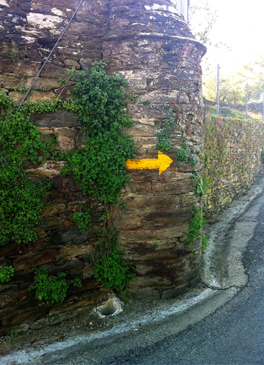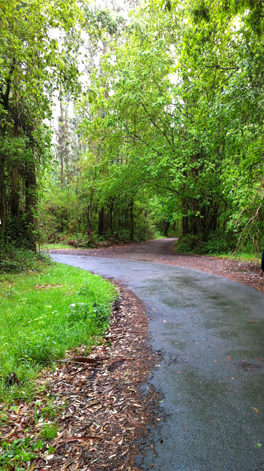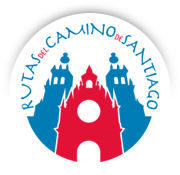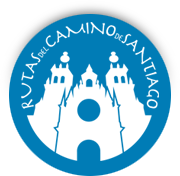
History of the birth of the camino de Santiago routes


Camino de Santiago routes:
The discovery of the grave of the Apostle Santiago between the years 820 and 830 in the forest of Libredón, where the Cathedral of Compostela now stands, was one of the most important events of the European Middle Ages.
The news of the discovery of the apostle's remains spread rapidly across the continent and soon after began the phenomenon of the pilgrimages.
The result was the cult of the tomb of one of Jesus' principal apostles. Santiago, or James, was the first martyr of the Christian religion, being decapitated by Herod around the year 44.
Manuscripts dated from the VIth century place Santiago's journey to Hispania between the years 33 and 42. His disciples, after he died, wanted to bring his remains here. They buried him close to Finis Terrae, at that time considered the end of the world and full of magic and mystery.
The rediscovery of the grave, almost eight centuries later, marks the begginning of the cult which has transformed the Camino into a vital focal point in Europe and the city of Santiago de Compostela and it's Cathedral into one of the three most important centres of Pilgrimage alongside Rome and Jerusalem.
Every year people of all nationalities travel along these routes, the numbers increasing when the feast day of Santiago falls on a Sunday and the jubilee indulgence can be earned: a forgiveness for ones sins granted by the Church. The camino is a path to new enlightenment, harbinger of cultural and artistic advances appearing on the continent such as the Romanesque which appeared along the route to Compostela and has been and is an example of human solidarity.
To experience walking along a route with more than 1200 years of history, to put aside daily routine, is today, just as it was at the beginning, a combination of sacrifice and reward which makes whoever lives it change the way they see life.
The European starting points are:
France, Italy and other continental countries. The route enters Spain through the Pyrenees and from Navarra (Puente de la Reina) it becomes a single path. The French Way crosses the north of the country until it reaches Santiago.
The itinerary described in the XIIth century in the Codex Calixtinux enters Galicia at the O Cebreiro mountain and is the most representative, but it is neither the only one nor the oldest. Ten pilgrimage routes to Santiago were drawn over time: The Primitive Way is the oldest, and next to it the Camino of the North: both enter Galicia via Asturias; The English Way which enters at Ferrol and A Coruña; The Portuguese Way and it's coastal variable; The Southeastern Way which crosses the Via de la Plata, from southeast to northwest; the Way of Fines Terra – Muxia which prolongs the pilgrimage to the mythical Finis Terrae; The Way of Mar de Arousa and Ulla which reminds us according to tradition of the route which Santiago's remains took. And last of all the winter Way, which is becomes the alternative to the cold mountains of Lugo and O Cebreiro.
The goal is Santiago de Compostela, capital of the autonomous community of Galicia, with a historical centre which was declared World Heritage Site by UNESCO in 1985.
In 1987 the Council of Europe recognised the Camino de Santiago as the first European cultural itinerary, and in the holy year 1993 the actual Camino was designated World Heritage Site.
The discovery of the grave of the Apostle Santiago between the years 820 and 830 in the forest of Libredón, where the Cathedral of Compostela now stands, was one of the most important events of the European Middle Ages.
The news of the discovery of the apostle's remains spread rapidly across the continent and soon after began the phenomenon of the pilgrimages.
The result was the cult of the tomb of one of Jesus' principal apostles. Santiago, or James, was the first martyr of the Christian religion, being decapitated by Herod around the year 44.
Manuscripts dated from the VIth century place Santiago's journey to Hispania between the years 33 and 42. His disciples, after he died, wanted to bring his remains here. They buried him close to Finis Terrae, at that time considered the end of the world and full of magic and mystery.
The rediscovery of the grave, almost eight centuries later, marks the begginning of the cult which has transformed the Camino into a vital focal point in Europe and the city of Santiago de Compostela and it's Cathedral into one of the three most important centres of Pilgrimage alongside Rome and Jerusalem.
Every year people of all nationalities travel along these routes, the numbers increasing when the feast day of Santiago falls on a Sunday and the jubilee indulgence can be earned: a forgiveness for ones sins granted by the Church. The camino is a path to new enlightenment, harbinger of cultural and artistic advances appearing on the continent such as the Romanesque which appeared along the route to Compostela and has been and is an example of human solidarity.
To experience walking along a route with more than 1200 years of history, to put aside daily routine, is today, just as it was at the beginning, a combination of sacrifice and reward which makes whoever lives it change the way they see life.
The European starting points are:
France, Italy and other continental countries. The route enters Spain through the Pyrenees and from Navarra (Puente de la Reina) it becomes a single path. The French Way crosses the north of the country until it reaches Santiago.
The itinerary described in the XIIth century in the Codex Calixtinux enters Galicia at the O Cebreiro mountain and is the most representative, but it is neither the only one nor the oldest. Ten pilgrimage routes to Santiago were drawn over time: The Primitive Way is the oldest, and next to it the Camino of the North: both enter Galicia via Asturias; The English Way which enters at Ferrol and A Coruña; The Portuguese Way and it's coastal variable; The Southeastern Way which crosses the Via de la Plata, from southeast to northwest; the Way of Fines Terra – Muxia which prolongs the pilgrimage to the mythical Finis Terrae; The Way of Mar de Arousa and Ulla which reminds us according to tradition of the route which Santiago's remains took. And last of all the winter Way, which is becomes the alternative to the cold mountains of Lugo and O Cebreiro.
The goal is Santiago de Compostela, capital of the autonomous community of Galicia, with a historical centre which was declared World Heritage Site by UNESCO in 1985.
In 1987 the Council of Europe recognised the Camino de Santiago as the first European cultural itinerary, and in the holy year 1993 the actual Camino was designated World Heritage Site.
© 2014. Rutas del Camino de Santiago. All rights reserved | Legal Advice  +34 685 186 974 - +34 923 54 16 88
+34 685 186 974 - +34 923 54 16 88
 +34 685 186 974 - +34 923 54 16 88
+34 685 186 974 - +34 923 54 16 88





